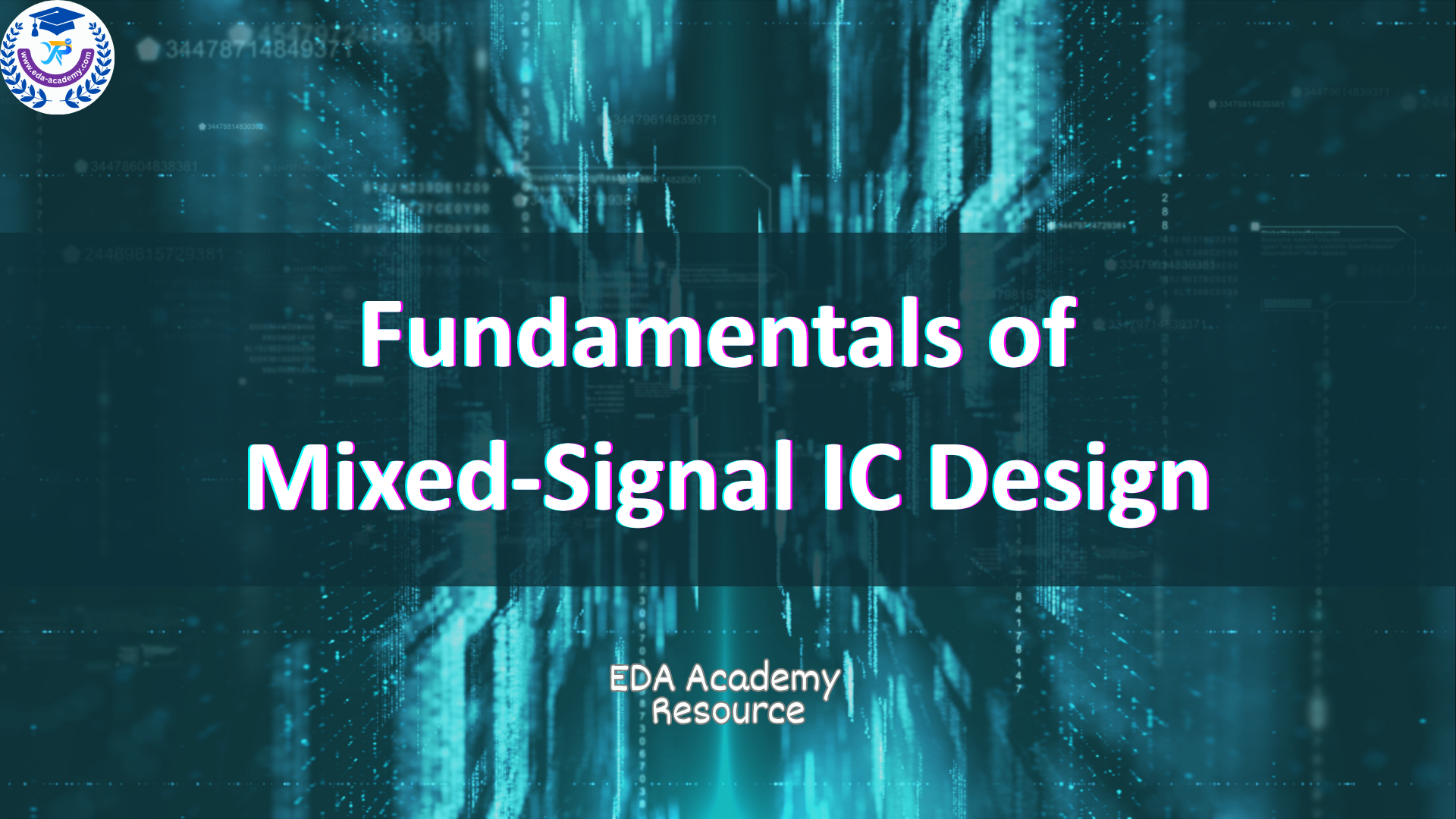Resource:
Fundamentals of Mixed-Signal IC Design (English)
Mixed-signal integrated circuits merge analog sensitivity with digital logic on a single silicon die, enabling seamless interaction between physical and computational domains. This content explores core principles of mixed-signal IC design, including signal processing across domains, power and grounding strategies, circuit layout optimization, and verification methodologies. Topics such as real number modeling, serializer/deserializer architecture, and signal integrity management provide deep technical insight into building reliable and high-performance mixed-signal systems across a wide range of application scenarios.
Purchase
Our course syllabus is regularly updated to reflect the latest advancements and best practices in the field. For individually purchased courses or resources with lifetime access, students can always access the content and receive updates for free. For members, all member-free courses and resources — including future updates — are accessible during the active subscription period. This ensures that both lifetime purchasers and active members can benefit from the most relevant and up-to-date content.
Created by EDA Academy
English
Last updated June 2025

Resource: Fundamentals of Mixed-Signal IC Design (English)
OR
USD $99.9
-70% Today
$29.9
One-time Purchase
& Lifetime Access
What you will get:
1.4 Hours of Immersive, High-Quality Video Lessons
Professionally produced and delivered by our expert team, covering core concepts and practical demonstrations, with step-by-step explanations and real-life examples to help you efficiently absorb knowledge and apply it immediately in a short time.
Certificate of completion
Upon successful completion of the course, you will receive an official certificate issued by EDA Academy, adding value to your resume and career development.
Access on mobile and computer
The course can be viewed anytime on mobile phones, tablets, and computers, allowing you to learn easily whether at the office, at home, or on the go.
Ongoing support from EDA Academy
After the course ends, you will continue to receive ongoing support from our team to help you consolidate knowledge and solve practical problems.
Further learning plan
Provides you with follow-up learning paths and recommended resources, enabling you to continue improving your skills and expanding your career development based on what you have learned.
Resource Catalogue
Description
Modern integrated systems increasingly rely on mixed-signal architectures to process both continuous and discrete information within a single semiconductor device. This convergence of analog and digital domains enables critical functionalities in communications, automotive control, medical instrumentation, and consumer electronics. From signal capture and amplification to data encoding and computation, mixed-signal ICs serve as the essential link between the real world and digital logic. Understanding their architecture, signal behavior, and system integration techniques is fundamental to designing efficient, compact, and reliable electronics.
Designing a robust mixed-signal system requires fluency in both analog precision and digital complexity. A well-defined development flow begins with domain-specific design activities, where analog schematics and RF layouts are created in tandem with digital behavioral models. These separate efforts are later unified through mixed-signal co-design, emphasizing accurate interfacing, clock-domain crossing, and electrical compatibility. Component selection plays a critical role during this stage, as parasitic interactions, frequency response, and supply voltage margins must be accounted for early in the design cycle. Positioning strategies for analog and digital blocks further influence noise isolation and performance consistency.
Once the high-level design is defined, physical layout and signal routing become the focus. Ground planning, power grid integrity, and signal path symmetry are crucial to maintaining performance under real-world operating conditions. Special attention is given to issues such as crosstalk, interference coupling, and voltage-current distribution, all of which directly impact system behavior. Layout optimization techniques—such as shielding sensitive traces, aligning analog paths, and isolating switching noise—help reduce risk and improve manufacturability. The placement of analog-digital interfaces, including bridge circuits and data converters, is strategically managed to avoid performance degradation.
Verification represents one of the most challenging aspects of mixed-signal design. Because simulation spans both continuous-time and discrete-event domains, a hybrid verification strategy is essential. This includes functional simulation for logic blocks, transient analysis for analog circuits, and co-simulation for mixed behavior. Real number modeling provides a high-performance abstraction for analog signals, enabling faster verification cycles using digital methodologies. Tools like SystemVerilog, Verilog-AMS, and VHDL offer diverse modeling approaches, but the true challenge lies in ensuring consistency across simulation environments. Designers must balance speed, accuracy, and coverage to meet tight product schedules without compromising functionality.
A high-performance mixed-signal IC is the result of carefully orchestrated design choices at each development phase. From initial architecture through tape-out, every decision must consider the interactions between signal domains, electrical constraints, and physical layout realities. Whether re-architecting serializers and deserializers for optimal timing or implementing isolation strategies for sensitive analog circuitry, the success of a mixed-signal design depends on disciplined engineering practice and a thorough understanding of system behavior. With the increasing demand for intelligent, efficient, and miniaturized systems, mastering mixed-signal design is essential for enabling the next generation of electronic innovation.
We HATE spam. Your email address is 100% secure
The document will be emailed to you. Please check your Spam folder if it doesn’t appear in your inbox.
We HATE spam. Your email address is 100% secure
